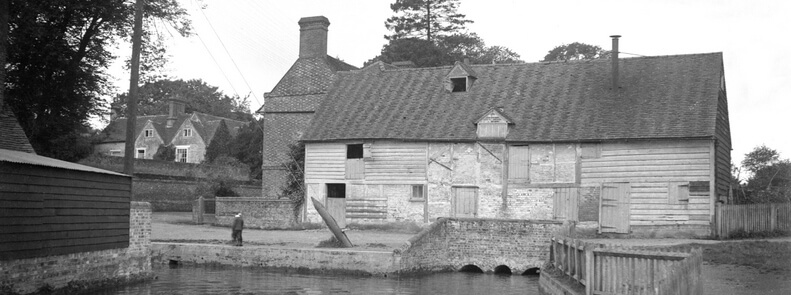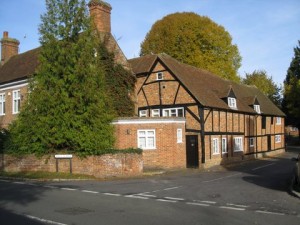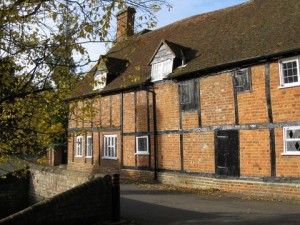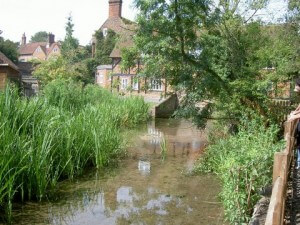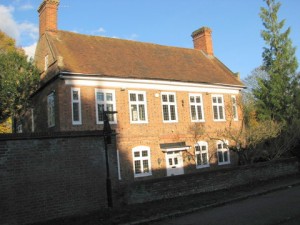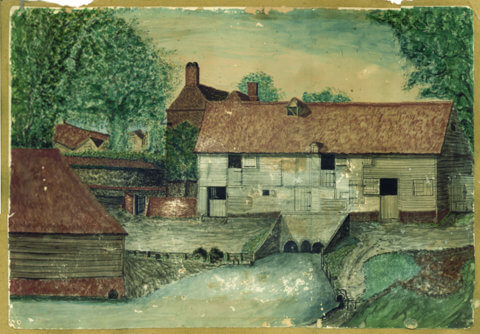This is one of the three mills in Amersham mentioned in the Domesday book. and used to be known as Upper Mill or Sibley’s Mill, after the name of a 19th century miller. The present building dates from around 1700 when the “pitt wheel” and a new stone were put in. It was bought from the Cheyne family by William Drake in 1792. This mill was a working flour mill until 1930s, previously a paper mill and earlier used by the Wellers for their brewery.
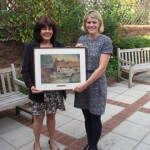
The watercolour below has very generously been given to the museum by Lindsay Gregory, a direct descendant of Joseph Gregory, a miller at what was then known as Gregory’s Mill. The Gregory family were millers there between 1746 and 1863. This watercolour, probably painted in the 18th century, has been handed down through the generations and was painted by one of the Knight family (cousins of the Gregory family), whe were furniture makers in the town. The picture has now been restored.
 The last miller was Arthur A Sibley who had previously run the Little Missenden mill, which had been converted to run using a steam engine in about 1880.
The last miller was Arthur A Sibley who had previously run the Little Missenden mill, which had been converted to run using a steam engine in about 1880.
In the late 1930s Norris Bazzard and his wife Nan (youngest of the ten Brazil children) owned Town Mill and Norris started his solicitor’s practice in a small office there. During the war, they leased the Mill to a manufacturing company and went to live in Little Missenden. The Brazil parents died in 1942 & 43. After the War three of the Brazils (Doris, Ron and John) sold 52 High Street, the family home, and bought Town Mill from Norris and Nan. They renovated the house, laid out the gardens and dammed the river to make a swimming pool.
John Brazil, with his brothers George & Ron, founded Brazil’s pie and sausage factory that stood where Tesco now is. The business started at the back of his father’s butcher’s shop in the High Street and developed into a very successful business. In more recent years this house has undergone a lot of redevelopment and the mill itself is no longer visible, but the Misbourne still flows below the house.
According to Oxford Dictionary of English Place Names, Misbourne comes from Old English “mysse” or water arum, a form of water lily, so Misbourne is the intermittent stream where the water arum grows. Most rivers and place names with bourne are linked to intermittent streams flowing over porous chalk eg Bournemouth and Eastbourne. A letter in the Museum tells of a miller at the west end of town asking the squire for a rent reduction as the water was too low to work the mill.
In the garden of the house, the stream was dammed to create the town’s swimming pool – see the photo in the gallery below. Two houses (nos. 197 and 199) have now been built on the garden.
Click on any of the photographs below to enlarge it and to see the description. Then click on forward or back arrows at the foot of each photograph. To close the pictures, just click on one.

